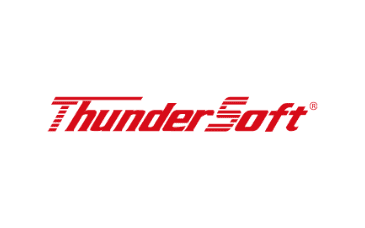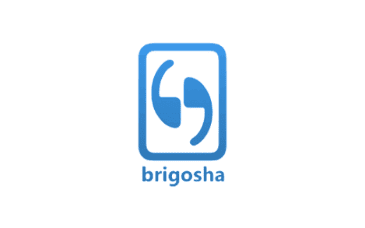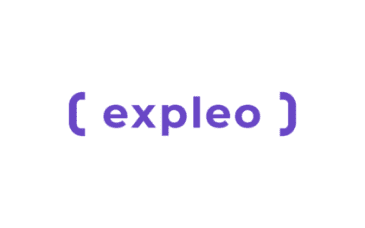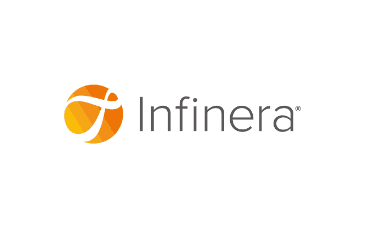PG Diploma in VLSI Design & Verification for Working Professionals
100% JOB Assured with Globally Accepted Certificate
Live Instructor-Led Online / Offline Sessions, Weekend / Evening Sessions
Kick Start your Dream JOB in Core Domain through the Placement Assured PG Diploma program from the 24 years of excellence EdTech Company tied up with more than 500+ Hiring Partners.
Overview
100% Job Assured Courses from the Best VLSI Training Institute in Bangalore
Description
Fundamental knowledge in Advanced Digital Design, Analog Design and Verilog based design and verification is a differentiating factor in finding the right career opportunities in the most promising industry. The PG Diploma in VLSI Design & Verification course from Cranes Varsity ensures that a fresher is prepared on the entire aspects of the VLSI front end domain, including training on VLSI flow, SOC design, verification concepts, digital design, Verilog, and System Verilog. The VLSI design course content is well-structured and mapped with leading industry requirements and their standards. This is a practical-oriented course involving multiple hands-on projects.
Learn VLSI Course from a Top-Rated Training Institute
Cranes Varsity is a well-established VLSI Training Institute in Bangalore (Available Online) with a track record of placing more than 100 VLSI aspirants in companies like Robert Bosch, L&T, ACL Digital, Park Controls and Communications, Insemi Technologies, Radiant Semiconductors, Bit Silica, Capgemini, Smart Socs, Traana, Tech Mahindra, Cyient, Signoff Semiconductors, Incise, and Dexcel, among others.
In the placement assured VLSI Course from Cranes Varsity, the training will be provided on VHDL, Verilog, FPGA, System Verilog and UVM/ OVM technologies. It will be front-end training which has comprehensive hands-on training on Verilog Programming and Verification Methodologies. The trainees will also be trained on the Artix board.
VLSI Course Modules
Generic
- Fundamentals of Electronics and Embedded Systems
- Programming in C following MISRA C
- Data Structures and Algorithms
- Oops with C++
- ARM Architecture and Protocols – UART, SPI, I2C
Design and Synthesis Specialization
- Design of VLSI Subsystems with VHDL
- Front End RTL Design Using Verilog
- FPGA Architecture and Synthesis
Verification Specialization
- Design and Verification Using System Verilog
- Functional Verification using UVM
Project Stream
Design, Simulation, Implementation, and Verification of Digital Controllers, ALU Cores, and protocols such as UART, SPI, I2C FPGA Board.
Platform
- XILINX
- Modelsim
VLSI Training Course Content
Generic:
Electronics and Embedded Hardware Familiarization – 08 Days
- Introduction to Embedded System
- Securing Embedded Systems
- Electrostatic Discharge Essentials
- Fundamentals of Booting for Embedded Processors
SDLC – 04 Days
- SDLC – Development Life cycles and Frameworks
- Development and Operations
- Agile – an iterative and responsive software development methodology
- Embedded Testing
- Development Bible
- IoT Security
Programming in C following MISRA C – 12 days
- Introduction to C
- Loop Control Structures
- Working with Multiple Files
- Arrays
- Data types and Operators
- Modular Programming using Functions
- Preprocessor
- Strings
- Conditional Statements
- Storage Classes
- Conditional Inclusion
- GDB Debugger
Linux Commands & Shell Scripting – 04 days
- Introduction to the operating system
- System Navigation command
- Shell scripting Input and output
- Text Editors: Vim and gedit
- Manipulating Data
- Arithmetic Expression
- Finding Linux Documentation
- Process Related commands Filtering
- Decision making Looping Constructs
Basic Python Programming – 04 days
- Introduction to Python
- Python Functions
- Scope of Variables
- List and Tuple
- Map and filter functions
- Python Data types and Conditions
- Default arguments
- Global Specifier
- List Methods
- String
- Control Statements
- Functions with variable number of args
- Working with multiple files
- List Comprehension
- Set and Dictionary
LPC/ARM Cortex M3 Programming using Embedded C – 04 days
- Introduction to ARM Processor
- ADC Programming
- GPIO- General Purpose Input
- Timers
- LCD programming
- Counters
Design and Synthesis Specialization:
RTL coding with Verilog – 15 days
- Designing Methodology
- Verilog data types
- Top-Down Methodology
- Verilog Scalar /Vector
- Bottom-Up Methodology
- Verilog Arrays
GATE LEVEL MODELING
- Gate Instantiate
- Delay in Gate level Design
- Continuous Assignment statement
- Design RTL From logic Diagram
- Learning about different types of counters, register
- Synchronous Finite State Machine Design.
- Logic Gate primitive
- Data Flow modeling
BEHAVIORAL MODELING
- Structured procedural Statement: Always Statement, Procedural Statement
- Conditional Statement: If..else statement, case statement: casex, casez
- Blocking Statement, Non-Blocking statement
- Loop: While, do while, for, for each, forever, repeat.
- Timing Control Statement: Delay based timing control, Event Based timing control
DESIGN OF DIGITAL DEVICES
- FSM: Mealy machine, Moore machine
- Useful Of Modeling Technique
- Procedural continuous, Assignment Statement
- Flip flop
- All combinational and sequential circuit using Verilog
- Deassign Statement, force statement, Release statement
- Counters, PWM
- Delay Control Statement: Intra delay, inter delay, rise delay, fall delay
- CRC checking, UART
Prototyping using FPGA & SOC FPGA, TCL Scripting – 10 days
- Introduction to FPGA
- CPLD, FPGA, FPGA Working, Design Flow
- Design and Implementation of projects on FPAG
- Introduction, Running Tcl, Simple Text Output, assigning values to variables, expr, Compute, Put
- Associative Arrays, Array – Iterating and use in procedures, Dictionaries, File Access, Information about Files – file, glob
- FPGA Architecture
- Interconnects, Tool Installation
- Implementation of Counter – up counter, down counter, up down counter, mod counter, Johnson counter, ring counter
- While loop, For and incr, proc, Variable scope – global and upvar, TCL List.
- Invoking Subprocesses from Tcl – exec, open, Info.
- CLB, I/O blocks
- Working Designing basic FPGS example (Adder, Subtractor, Counter)
- UART, SPI, I2C, AXI4 on FPGA
- String Subcommands – length index range, String comparisons
- Modularization – source, building reusable libraries – packages and namespaces, Creating Commands – eval
VLSI Design of Protocols – UART, I2C, SPI, AXI4 – 5 Days
- UART: Universal Asynchronous Receiver and Transmitter
- SPI: Serial Peripheral Interface.
- I2C: Inter-Integrated Circuit.
Verification Specialization:
Design and Verification using System Verilog- 12 Days
- Introduction of System Verilog, Need of system Verilog
- Array- Fixed array- packed and unpacked array
- Process:- Fork-join, Fork-join any, Fork-join none, Wait-fork
- Explanation of assertion with example
- Environment of Verification
- Dynamic Array, Associative array
- OOPS- Inheritance, Polymorphism, Data hiding, Encapsulation
- Explanation of coverage with example
- Data types – 2satete, 4 state, enum, string, structure, union, class
- Queues
- Class – Deep copy, shallow copy, Overriding class, Coverage: Functional Coverage, Cross coverage
- Working on verification environment
Verification using UVM – 14 Days (40 Hrs.)
- Introduction UVM: why UVM
- Analysis, Fifo, UVM socket concept, working on digital circuit
- Data Introduction UVM: why UVM UVM Object: Base class,
- UVM object-Copy/Clone types -2satete
- UVM test Bench
- UVM test Benches
Verification of Protocols – UART, I2C, SPI, AXI4 – 5 Days
- Verification of Protocol with SV/UVM – UART
- Verification of Protocols with SV/UVM–AXI
- Verification of Protocols with SV/UVM – I2C
- Verification of Protocols with SV/UVM – SPI
Placement Statistics
















































VLSI Course FAQs
Is the VLSI Design easy to learn?
VLSI is not tough for a person with an Electronics background. If he is strong in digital concepts and knows how to write programs then definitely VLSI design and Verification will be easier.
Is coding required for VLSI?
Yes, Coding is required for VLSI frontend development for designing and verification. In VLSI, the programming languages for IC design are called hardware description languages (HDLs). These include VHDL, Verilog, System Verilog, C, and scripting languages like Perl and TCL.
Can I do a VLSI Design Course online?
Yes, VLSI Course can be done online as it requires only EDA software tools.
Does Cranes Varsity offer placement assistance after VLSI Design Course completion?
Yes, 100% assistance will be provided by Cranes Varsity to get a job after the VLSI Design Course completion.
What are the prerequisites for VLSI Course enrollment?
An Engineering degree in Electronics with good programming and hardware knowledge.
What courses does Cranes Varsity offer in VLSI Design and Verification?
Cranes Varsity offers a range of courses in VLSI Design and Verification, including:
• Post Graduate Diploma in VLSI Design
• Certificate Courses in VLSI Verification
• Short-term courses on Digital VLSI Design, Analog Design, and ASIC Design
• Corporate training programs for industry professionals
Who can benefit from VLSI courses at Cranes Varsity?
Our VLSI courses cater to:
• Engineering graduates in Electronics, Electrical, and Computer Science.
• Postgraduates looking to specialize in VLSI design and verification.
• Professionals in the semiconductor industry wanting to enhance their skills.
• Research scholars aiming to build a career in VLSI technologies.
What is the duration of VLSI courses at Cranes Varsity?
The duration of the courses varies:
• Post Graduate Diploma in VLSI Design: 6 to 9 months.
• Certificate Courses: 3 to 6 months.
• Short-term courses: 1 to 3 months, depending on the specific topic.
What are the eligibility criteria for enrolling in VLSI courses?
Eligibility criteria generally include:
• Bachelor’s degree in Electronics, Electrical Engineering, Computer Science, or related fields.
• A basic understanding of digital and analog electronics is advantageous but not mandatory for beginners.
What programming languages are taught in VLSI courses?
In our VLSI courses, you will primarily learn:
• Verilog and VHDL for hardware description.
• SystemVerilog for advanced verification techniques.
• Tcl scripting for automating design flows.
• Basic understanding of programming concepts in C/C++ for algorithm development.
What tools and software will I work with during the VLSI course?
Students will gain hands-on experience with various Electronic Design Automation (EDA) tools, including:
• Cadence: For schematic capture and layout.
• Synopsys: For synthesis and simulation.
• Mentor Graphics: For PCB design and verification.
• ModelSim: For simulation of HDL designs.
What is the difference between VLSI design and VLSI verification?
• VLSI Design involves creating the hardware architecture and the logic of the circuit using HDLs. It focuses on how the circuit operates and meets design specifications.
• VLSI Verification ensures that the design is correct and meets the required specifications before it is fabricated. This involves testing and validating the design through simulation and formal verification techniques.
Does Cranes Varsity provide placement assistance for VLSI courses?
Yes, Cranes Varsity offers comprehensive placement support to students. We have partnerships with various semiconductor companies and technology firms. Our placement assistance includes:
• Resume preparation.
• Mock interviews.
• Access to job opportunities in VLSI design, verification, and related fields.
What job roles can I pursue after completing a VLSI course?
Upon completing a VLSI course at Cranes Varsity, you can pursue roles such as:
• VLSI Design Engineer
• Verification Engineer
• RTL Design Engineer
• ASIC Designer
• FPGA Designer
• Embedded Systems Engineer with a focus on hardware.
How does Cranes Varsity prepare students for industry requirements in VLSI?
Our curriculum is designed in collaboration with industry experts to meet the latest trends and
demands in the VLSI field. We emphasize:
• Practical training through projects and lab work.
• Industry-relevant case studies and real-world applications.
• Guest lectures from professionals in the VLSI industry
Who are your trainers for the program and how are they selected?
Our trainers are seasoned professionals and industry experts with over 10+ years of relevant experience teaching the VLSI certification course. Each of them has gone through a rigorous selection process that includes profile screening, and technical evaluation before they are certified to train for us. We also ensure that only trainers with a high alumni rating continue to train for us.
What is the duration of PG Diploma in VLSI Design & verification?
Program duration is 6 Months.
Are the VLSI courses at Cranes Varsity more theoretical or practical?
Cranes Varsity emphasizes a hands-on learning approach. While theoretical concepts are essential, a significant portion of the course focuses on practical lab sessions, real-world projects, and applications of VLSI design and verification tools.
What types of projects can I expect to work on during the VLSI course?
Students will work on various projects, including:
• Designing and simulating digital circuits using Verilog or VHDL.
• Implementing a complete VLSI design flow from specification to layout.
• Creating a verification testbench for a given design.
• Projects involving FPGA programming and implementation.
Is there online support for the VLSI courses?
Yes, Cranes Varsity provides online learning support for VLSI courses, including:
• Access to recorded lectures and tutorials.
• Virtual labs for practical experimentation.
• Online assessments and assignments.
• Interactive Q&A sessions with faculty.
What certificates will I receive on completion of the training program?
All students will get Successful Course Completion by Cranes Varsity. Students enrolled for Embedded and Automotive Program can apply for nasscom certification also. Once the student clears IT-ITes SSC examination, they will get the certificate.
How can I enroll in a VLSI course at Cranes Varsity?
To enroll in a VLSI course:
• You can fill out the application form and the dedicated admission counsellor will contact you..
• You can also visit our campus for direct inquiries and enrollment assistance.



